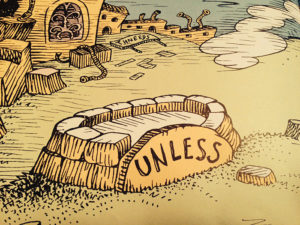Sixty six years. That’s all it took between the first Wright Brothers flight in 1903 to the space race ending with Neil Armstrong taking one giant leap for mankind by stepping foot on the moon in 1969. This is always a fact that has astounded and fascinated me for many reasons. It resonates even more when I read or talk about modernising the construction industry.

If you looked at UK housebuilding in 1903 would it look substantially different from housebuilding of today? I would argue not because if you took a bricklayer from 1903 and placed them on a building site today, they’d slot right into the line, pick up their trusty trowel to lay mortar and lay brick after brick. If anything they would be disappointed by the lack of detailing compared to the ornate Victorian styling they were accustomed to, although they would surely revel in the safe working conditions.
Sure, the industry has refined elements over this 116 year period, roof trusses are a great example, but the methodology of how we build is principally the same. Henry Ford is attributed to saying; “If I had asked people what they wanted, they would have said faster horses.” The construction industry has done exactly this, it has produced faster horses rather than inventing the car.
Mark Farmer’s ‘Modernise or Die’ review paper released in 2016 suggests the UK’s construction industry faces “inexorable decline” unless longstanding problems are addressed. In particular he highlights the dysfunctional training model, its lack of innovation and collaboration, and its non-existent Research & Development culture.
The UK Government has set a housing target of 300,000 (year-on-year), yet the industry delivered just 220,000 in 2017/18 (a 2% increase from 2016/17), with non-delivery of more than 300,000 since the 1970s when council house building programmes were still in full flight. A YouGov poll in 2016 found that two thirds of school leavers and graduates do not view construction as an attractive career choice. Twenty per cent of the construction workforce will reach retirement age in 2021 (ONS 2011). Brexit brings its own complications with a workforce made up of 7% EU nationals (this reaches 28% in London). Combine all these factors and essentially we are asking for more than ever from an industry at a time when its workforce is in decline. The title of Mark Farmer’s paper seems entirely appropriate however “necessity is the mother of all invention”.
One of the issues here is that the big housebuilders will continue to ‘build to sales pace’ as their primary function is to make profit. Traditional construction enables them to speed up and slow down site production to meet demand, therefore they have no need to innovate.
 As a father I am keen to see my kids grow up and be able to live in their own house. I am also familiar with the great work of Dr. Seuss, including The Lorax. In which the Once-ler, having pondered the demise of his factory, looked at the simple word ‘UNLESS’ left by the Lorax and finally realised its meaning: “Unless someone like you cares a whole awful lot, nothing is going to get better. It’s not.”
As a father I am keen to see my kids grow up and be able to live in their own house. I am also familiar with the great work of Dr. Seuss, including The Lorax. In which the Once-ler, having pondered the demise of his factory, looked at the simple word ‘UNLESS’ left by the Lorax and finally realised its meaning: “Unless someone like you cares a whole awful lot, nothing is going to get better. It’s not.”
This challenge therefore rests firmly with organisations like Riverside, who care, who strive to makes things better, and who want to meet the challenge of stepping up supply. Innovation is simply not going to happen unless people like us drive it forward.
The benefits are clear: high quality precision engineered sustainable homes, improved health and safety standards, which can be handed over quicker than traditional. The real question is why not? No reasonable person would buy a car that was built in a field which is exposed to the elements. Yet for some reason we do not yet apply the same exacting standards to the homes we live in.
We started looking at offsite manufacturing with other like-minded providers as part of the Modular Allianz in 2015. At that point the industry was very much at the thin end of the wedge and despite our best efforts we could not find a suitable solution. However much has changed in that time: countless factory visits, meetings and discussions have lead us to where we are now. Working with a suitable partner: Ilke Homes, to deliver Riverside’s first fully volumetric off-site manufactured project, which will deliver 16 homes for Affordable Rent and Shared Ownership in Lee Valley. These homes will be built in Flaxby, Yorkshire and delivered to site in two parts and lifted into place with internal and external finishes in place. This will be a journey for discovery as we understand the impact of this type of construction from a Delivery, Assets, Finance, Shared Ownership, Process and Customer Experience perspective. This learning will enable us to deliver more projects of this nature to meet the challenge of stepping up supply.
Ultimately we, as an organisation and as a sector, need to choose our future. Just like JFK chose to go to the moon and got there just eight years later.
Conor McGuigan, Project Manager – Development